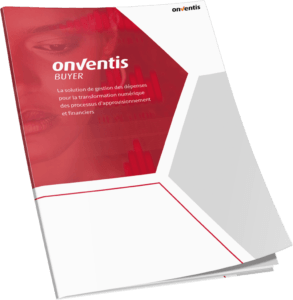Spend Analysis: Collecting Data for Improved Business
Key takeaways:
- Spend analysis is an ongoing process that provides insights into spending patterns, enabling strategic decisions, cost savings, and process improvements.
- Effective spend analysis requires qualitative and quantitative work, including robust documentation, information management, and comprehensive data collection.
- Dialogue with stakeholders is critical for promoting understanding, trust, and actionable insights through collaboration and communication.
- Prioritising data accuracy, transparency, and consistency, along with investing in tools and processes, enables optimised procurement, cost savings, and a better understanding of business operations.

Let’s explore the importance of spend analysis and how it can enable structured discussions with stakeholders to enhance business operations. Throughout the process, we must consider several factors, including identifying the stakeholders, understanding the consumption of goods and services, and evaluating the current business relationships. Additionally, we will examine some crucial information management practices necessary for effective spend analysis and coordination with other projects and initiatives.
The insights gained from spend analysis can inform strategic decisions, drive cost savings, and improve processes. However, implementing an effective program requires careful planning, ongoing attention, and strong stakeholder engagement.
What is Spend Analysis?
Simply put, spend analysis is a process of gathering and analysing data related to your organisation’s spending on goods and services. The data collected can provide valuable insights into how money is being spent, which can inform strategic decisions and lead to improvements throughout.
However, spend analysis is not a one-time project, but an ongoing activity that requires regular attention and documentation. This means engaging with stakeholders to understand their needs and priorities, as well as working on specific category projects to drive change.
Qualitative and Quantitative Work
To effectively manage spend, you need to implement robust documentation and information management practices. This includes coordinating data from multiple systems, documenting peripheral conditions and stakeholder needs, and maintaining a clear and consistent category structure for reporting and analysis.
It is important to collect a wide range of information in a structured manner, including category definitions, supplier information, enrichment data, and improvement potential. By maintaining a comprehensive spend database, organisations can develop a more nuanced understanding of their spending habits and identify opportunities for improvement. This can help to reduce costs, streamline processes, and improve overall performance in any industry.
As stated above, spend analysis is an ongoing activity that requires continuous attention and refinement. Over time, as you gather more data and insights, you may identify opportunities for category projects aimed at driving change and improvement. These projects may involve more detailed and targeted analysis of spending in specific categories and may require collaboration and coordination across different departments and teams. By viewing this as an ongoing and iterative process, you can stay ahead of emerging trends and opportunities.
Dialogue with Stakeholders
Effective spend analysis requires constant dialogue with stakeholders, as this is critical for structuring the analysis and developing actionable insights. This means understanding who the stakeholders are, how to treat them, and what is important to them. By engaging with stakeholders on an ongoing basis, you can build trust and develop a more nuanced understanding of their needs, which can help drive the success of category projects.
To ensure that this analysis is effective, organisations must prioritise collaboration and communication across different departments and teams. This requires a coordinated effort to collect, manage, and analyse data from multiple systems and sources. But as most well know, such coordinated communication can be difficult, especially in larger companies. By leveraging technology solutions and automated workflows, organisations can streamline the data collection and analysis process, freeing up resources to focus on developing insights and driving change. Additionally, visualisations and reporting tools can be used to communicate findings to stakeholders, facilitating a more productive and engaging dialogue around spending habits and priorities.
Using Spend Analysis
To successfully implement and sustain such a program, you’ll need to prioritise data accuracy, transparency, and consistency. This requires a combination of effective data management practices, robust technology solutions, and a culture of collaboration and accountability. By investing in the right tools, processes, and people, organisations can build a data-driven culture supporting continuous improvement and optimising spending habits. Effective spend analysis can help your business save money, optimise your spending, and gain a more nuanced understanding of your business operations and priorities.
So, what can you take from this? Spend analysis is a continuous activity that requires both qualitative and quantitative work. It enables companies to structure discussions with stakeholders, leading to improvements in procurement processes, cost savings, and increased efficiency. By collecting and documenting information in a structured database, companies can gain valuable insights that help to optimise their procurement processes.
In the end, it is a valuable tool for companies to optimise their procurement processes and achieve cost savings. By following best practices, companies can ensure ongoing success and continuous improvement in their procurement operations.
To see how we handle spend analysis, check out this how-to video.
Weitere BlogsMore BlogsMeer blogs




